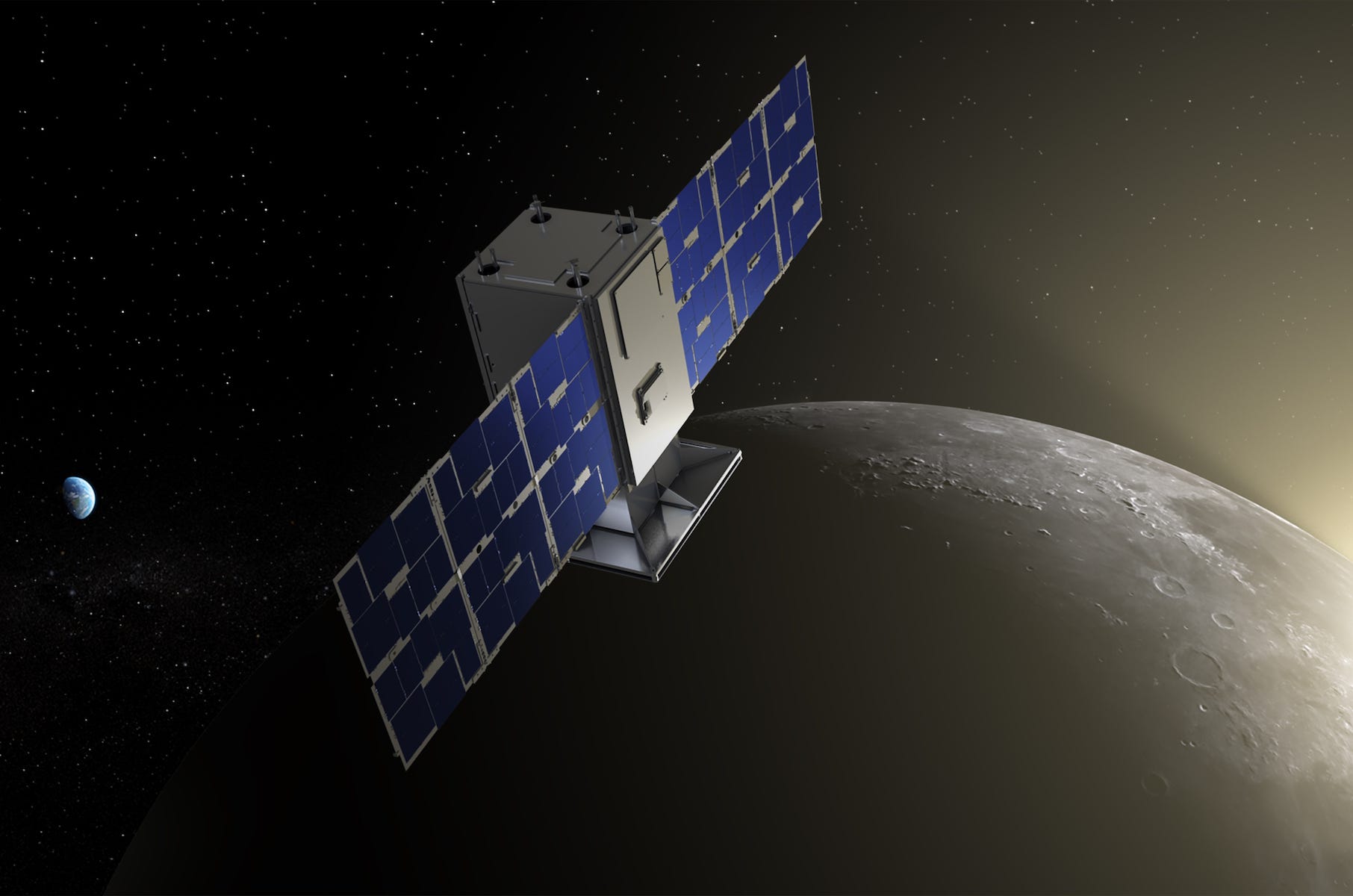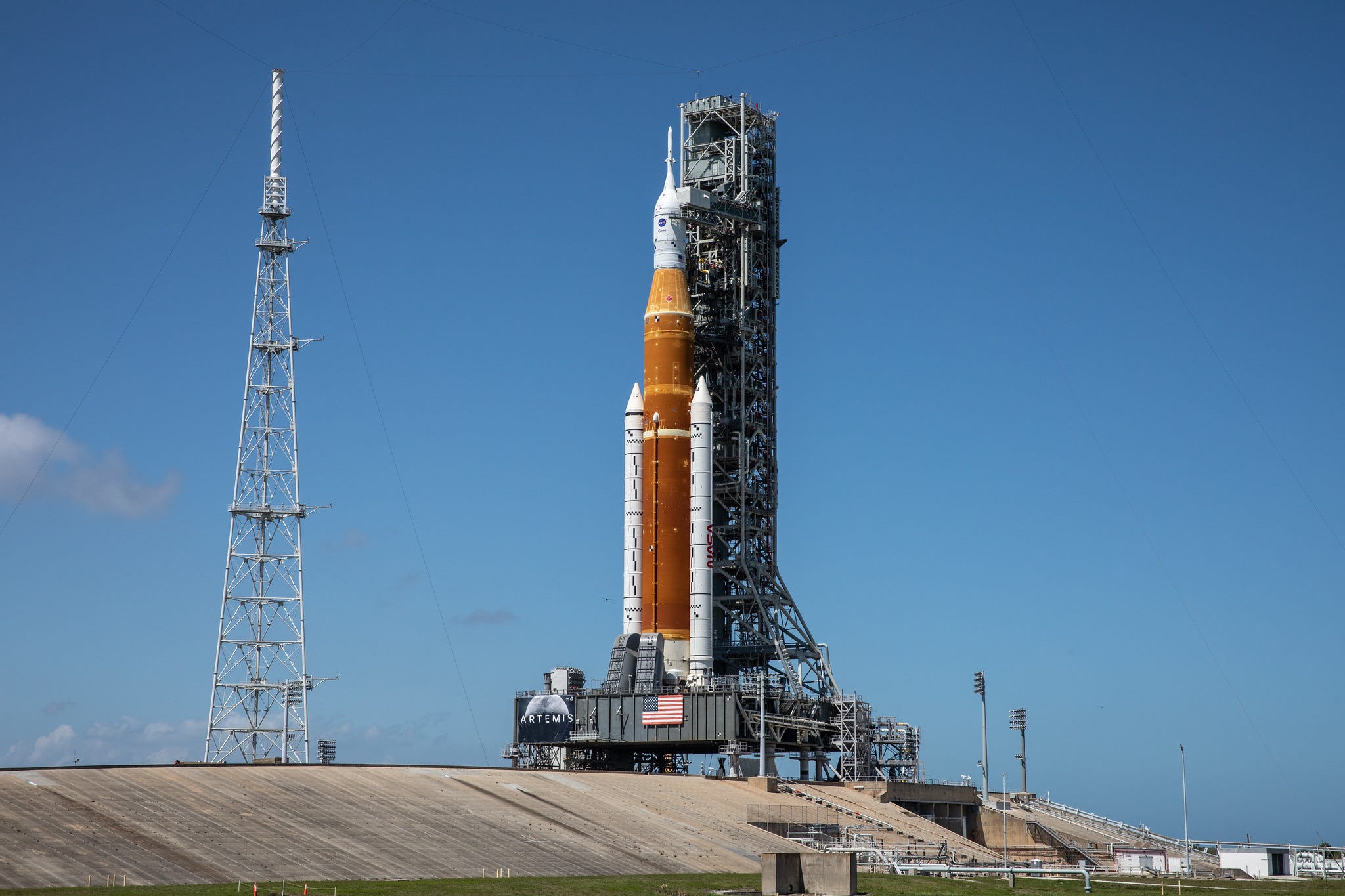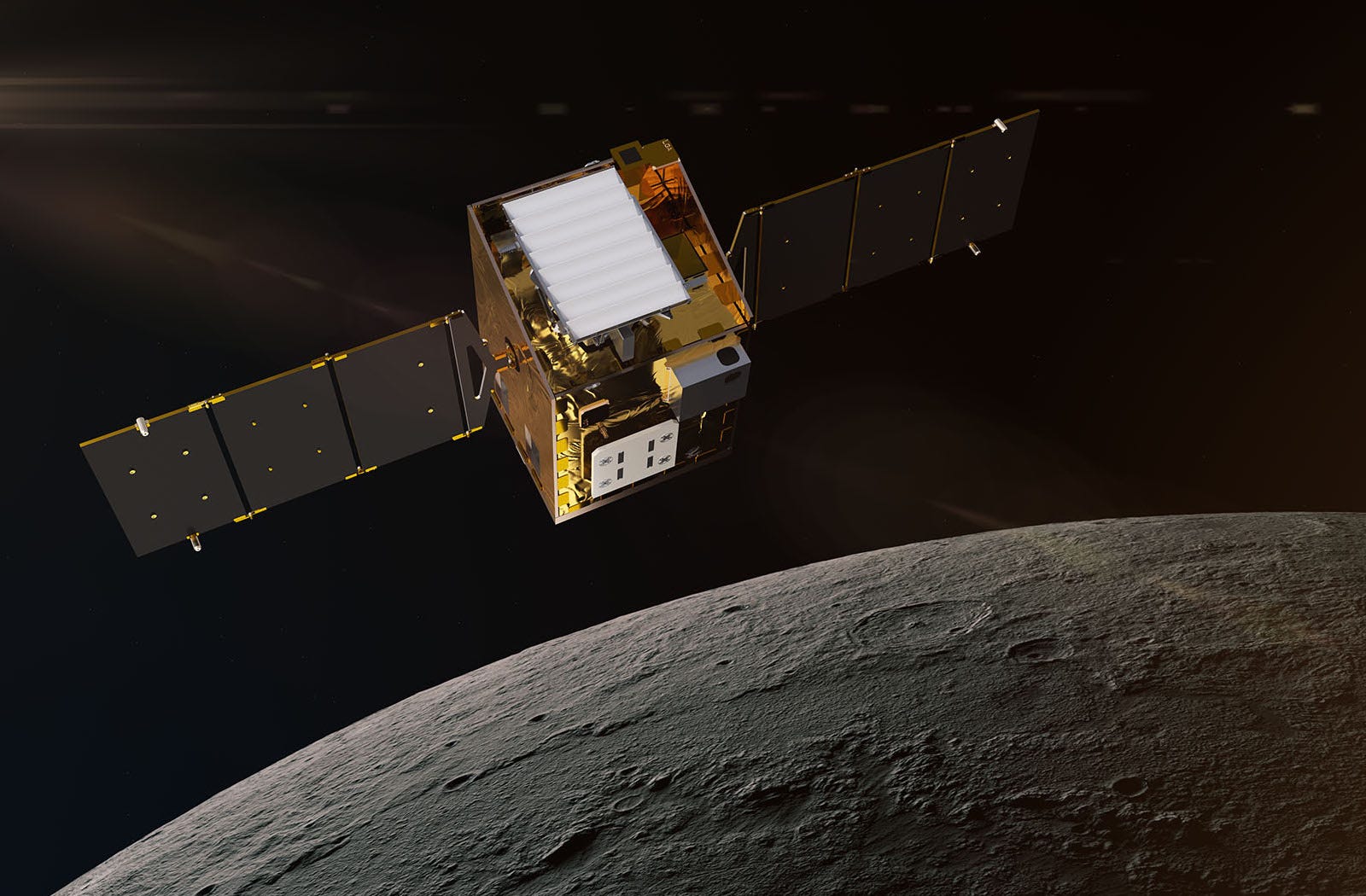Moon Monday #83: CAPSTONE launch, the final SLS rocket test, and more trailblazing
We’re about to have our first Moon mission launch since Chang’e 5 in 2020!
CAPSTONE launches for the Moon tomorrow
The NASA-funded and Advanced Space-built CAPSTONE spacecraft is set to launch tomorrow, June 28, from New Zealand on Rocket Lab’s small Electron launch vehicle with an upgraded Photon third stage. Photon will carry the microwave-oven-sized, 25-kilogram CAPSTONE spacecraft to a high elliptical Earth orbit over six days, and then push the craft to deep space on a fuel-saving ballistic transfer which arches back to the Moon in November. CAPSTONE will then enter its final orbit, called the near-rectilinear halo orbit (NRHO), which the NASA-led international Gateway station will be in later this decade. CAPSTONE intends to demonstrate the fuel-efficient nature of NRHO while helping refine our mathematical models by knowing the exact propellant and power needed to maintain said orbit.

The CAPSTONE mission’s goals extend beyond being a pathfinder for Gateway. Earlier this year, Advanced Space entered into an agreement with the U.S. Air Force to share orbital data collected by the spacecraft. CAPSTONE’s team will also collaborate with that of NASA’s Lunar Reconnaissance Orbiter (LRO) to have both spacecraft communicate with each other and demonstrate autonomous navigation in lunar orbit, that is, without relying on Earth’s ground stations. This capability is key for efficient operations in the future when many spacecraft will be around the Moon.
NASA completes final test of its SLS rocket before long-awaited Moon launch
Last week NASA completed the critical wet dress rehearsal test of its fully stacked SLS rocket. This is the first time the team loaded 2.65 million liters of super-chilled propellants into the rocket, practiced nearly all phases and permutations of launch countdown until T-29 seconds, and demonstrated safe unloading of propellants to simulate launch delay scenarios such as weather criteria for launch not being met.
A few technical problems showed up during the test, chief of which was a hydrogen leak at T-10 minutes in a small ‘quick disconnect’ line on the tail mast umbilical of the rocket’s mobile launcher. During an actual launch attempt, such an issue would trigger an automatic hold but engineers masked the data for this test so as to continue the countdown and demonstrate a successful handover of launch sequencing from the ground computer to the rocket’s own.

After an initial review of the test data, NASA considers their key objectives to be met, and has decided against the need for a fifth test to count all the way down to T-9.3 seconds as was originally intended. NASA will roll back the rocket to its assembly building later this week, where teams will replace a seal on the quick disconnect line to address the hydrogen leak and then begin launch preparations. The SLS rocket will most likely launch in September for the long-awaited Artemis I mission to send an uncrewed Orion spacecraft around the Moon, marking the beginning of a long string of missions and ambitions to sustain human presence on the Moon and in lunar orbit.
Thanks to Epsilon3 for sponsoring this week’s Moon Monday.
Thanks also to Tim Glotch for supporting my independent writing.
Lunar Trailblazer will launch two years early
NASA has moved up the launch of its Lunar Trailblazer orbiter mission from its 2025 flight as a rideshare alongside the IMAP spacecraft to a mid-2023 rideshare with Intuitive Machines’ second Moon lander launching part of NASA’s CLPS program. Notably, Trailblazer is the second mission NASA has accommodated on a CLPS launch after we learnt of the Lunar Flashlight CubeSat co-launching with Intuitive Machines’ first CLPS lander at the end of this year.

Part of NASA’s SIMPLEx program to send small spacecraft quickly on planetary science missions, Lunar Trailblazer will have two instruments to map the form, abundance, and distribution of water on the Moon in both permanently shadowed regions and sunlit areas. The mission will also monitor changes in water in sunlit regions over time, and is expected to provide holistic insights on the lunar water cycle. Trailblazer joins a slew of missions launching within the next two years to help characterize the nature of water ice on the Moon before the first humans land part of NASA’s Artemis campaign.
The seed for nuclear power on the Moon
NASA and the U.S. Department of Energy have awarded $5 million contracts each to three companies for developing an autonomous, compact and lightweight fission surface power system prototype. The companies are:
- Lockheed Martin, who is partnering with BWXT and Creare
- Westinghouse, who will work with Aerojet Rocketdyne
- IX, a joint venture between Intuitive Machines and X-Energy. They are teaming up with Maxar and Boeing.
A mature fission system evolving from these prototypes could launch to the Moon by end of decade to provide at least 40 kilowatts of electrical power for a decade or more—enough to continuously power 30 households. Fission systems can enable hardware to operate during the long and frigid lunar night, and in the permanently shadowed regions, and can power and enable sustained robotic and human presence on the Moon as the technology evolves.
Related: Masten’s NITE system and Astrobotic’s wireless charging system, both funded by NASA under ‘Tipping Point’ contracts, will also help hardware power through the lunar night.
More Moon
- It turns out that the two companies who recently won NASA contracts to develop spacesuits for future Artemis astronauts on the Moon—Axiom Space and Collins Aerospace—were the only ones to have bid per NASA’s source selection statement. Despite over 40 companies having shown initial interest, none of them submitted a complete proposal on time. Jeff Foust notes that Blue Origin is a partner of Collins in developing their suit, and that NASA won’t disclose financial details such as the guaranteed minimum amounts the agency is awarding each company.
- NASA LRO has quite possibly spotted the rocket body that was predicted to impact the Moon’s farside on March 4, 2022. While the object is suspected to the upper stage from the Chang’e 5 T1 launch, its identity remains mysterious. Interestingly, while other rocket body impacts on the Moon have made single craters, this one’s a doublet.
- Firefly has passed the Integration Readiness Review of its Blue Ghost spacecraft slated to land on the Moon in 2024 as part of NASA’s CLPS program. Firefly can now start integrating the 2-meter tall lander capable of carrying 155 kilograms of payloads to the lunar surface. I’ve covered the mission’s landing site and science in Moon Monday #70.
- NASA’s Commons account on Flickr recently uploaded an image of the U.S. and Soviet Union exchanging lunar samples from missions Apollo 11 & 12 and Luna 16 respectively. I wonder when would we next see another such symbolic as well as science-advancing gesture? Hopefully with Chang’e 6 and Artemis III.
→ Browse the Blog | About | Donate ♡
